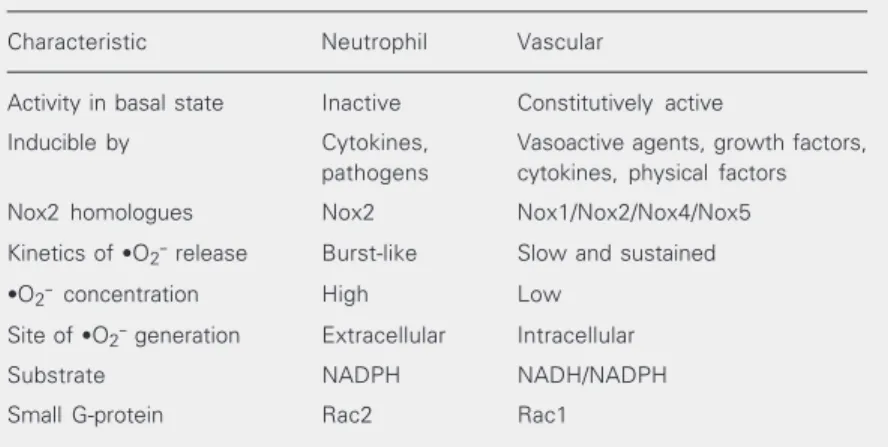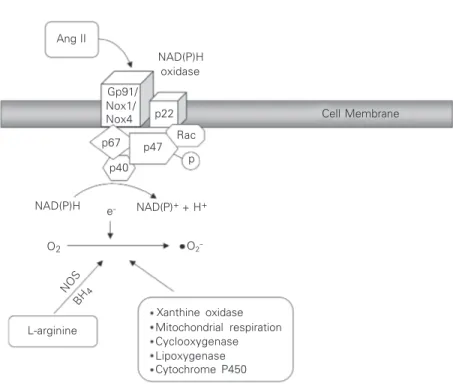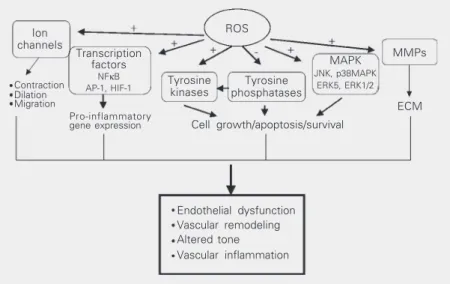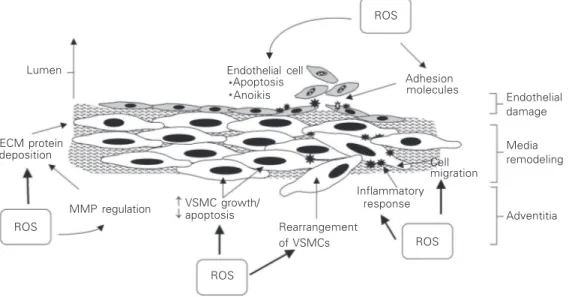Reactive oxygen species and angiotensin II signaling in vascular cells - implications in cardiovascular disease
Texto
Imagem




Documentos relacionados
The putative presence of multiple con- nexin subtypes in a given vascular smooth muscle cell has potentially important physi- ological implications. For example, there are three
Angiotensin II stimulates tyrosine phosphorylation of the focal adhesion protein paxillin in aortic smooth muscle cells. Role of focal adhesion kinase in
Time-lapse expression of Egr-1 and TGF-β1 protein levels in cultured vascular smooth muscle cells (VSMC) in each group. The expression of Egr-1 and TGF-β1 protein levels
To understand the pathophysiological mechanisms of pulmonary arterial smooth muscle cell (PASMC) proliferation and extracellular-matrix accumulation in the development of
In combination with thalidomide, statins inhibited cell migration, decreased VEGF (Vascular Endothelial Growth Factor) production and MMP-9 (Matrix Metalloproteinase-9) in
Various conditions leading to muscle wasting involve different pathways of intracellular signaling that trigger: (i) programmed cell death (apoptosis); (ii) increased
A panel of 4 metabolites (L-alanine, L- leucine, L-valine, succinic acid) showed up-regulated in cells incubated with S -Carvedilol compared with control cells and those incubated
As shown in Figure 3A, expression of markers related to the mesenchymal phenotype, such as markers of cell migration and smooth muscle cell differentiation, was higher in the cells